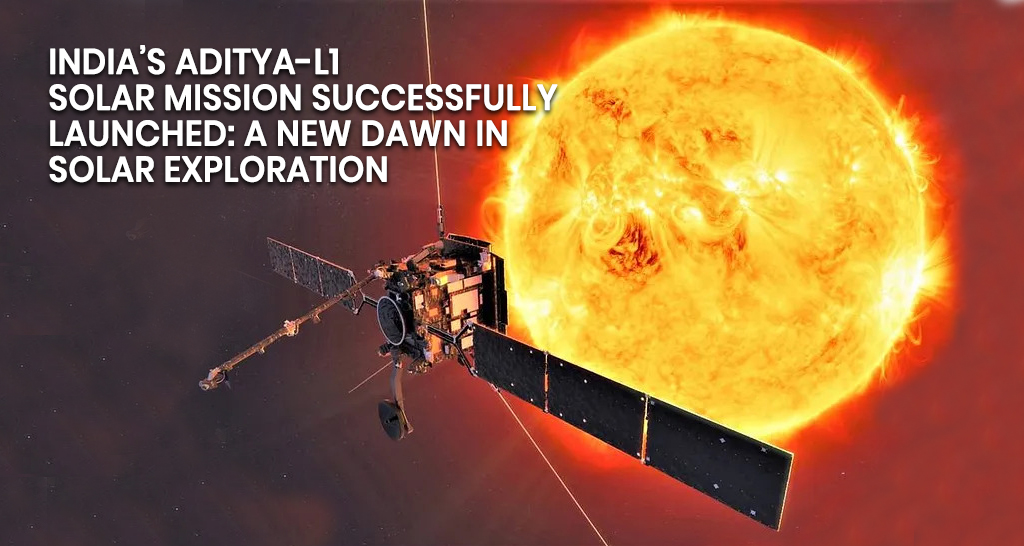In a big step towards understanding our solar system, the Indian Space Research Organisation (ISRO) has launched a special mission called Aditya-L1. This mission is all about studying the Sun, our closest star. It will give us important information about the Sun and how it affects space weather, technology, and planet Earth.
The Journey Begins
Aditya-L1’s journey began at 11:50 a.m. from Sriharikota using a reliable rocket called PSLV-C57. This mission comes after ISRO’s recent success with Chandrayaan-3, showing India’s expertise in space exploration.
On Friday, ISRO started a countdown of 23 hours and 40 minutes for Aditya-L1’s launch. It happened at 11:50 a.m. from the Satish Dhawan Space Centre in Sriharikota. About 63 minutes later, the satellite separated from the rocket and entered an orbit around Earth, which is unusual.
This mission, named PSLV-C57/Aditya-L1, is one of the longest missions for ISRO’s workhorse rocket. But the longest one still goes to the 2016 PSLV-C35 mission, which finished about two hours and 15 minutes after it took off.
Aditya-L1’s mission is a significant step in exploring and understanding the Sun.
Uninterrupted Solar Observation
One of the most remarkable aspects of Aditya-L1 is its strategic orbital placement. It’s in a special spot called Lagrangian Point 1 (L1), about 1.5 million kilometers away from Earth, directly facing the Sun. This unique positioning allows Aditya-L1 to watch the Sun without any interruptions, like when the Sun disappears during an eclipse. This means learning about the Sun’s behavior in real time.
Aditya-L1 has seven distinct payloads on board. Four are like super cameras to look closely at the Sun’s light. The other three tools measure things in the space around Aditya-L1, like electrically charged stuff and magnetic fields. These payloads help scientists learn a lot about the Sun.
Mission Objectives
The Aditya-L1 mission is a treasure trove of scientific objectives that promise to deepen our understanding of the Sun and its influence on our solar system:
The Aditya-L1 mission has several important goals. First, it aims to study the Sun’s outer part, the solar corona, and how it gets heated. This will help to understand more about the Sun’s outer atmosphere. Second, Aditya-L1 will explore the solar wind and how it speeds up and moves around in the Sun’s atmosphere. Third, scientists will closely watch space weather, including how solar wind is distributed and its temperature changes. This is crucial for understanding and predicting space weather events that could affect our activities on Earth.
Moreover, the mission will provide valuable insights into Coronal Mass Ejections (CMEs) and solar flares, which are powerful solar events. These insights are vital for predicting space weather near Earth. Lastly, Chris Hadfield, who used to be in charge of the International Space Station, thinks Aditya-L1 is great because it can protect Earth and all the technology we rely on. Solar storms can disrupt communication and electrical grids, so understanding the Sun’s behavior is essential for protecting our planet and technology.
Global Significance
The success of Aditya-L1 extends beyond India; it holds global significance. It is vital to learn about the Sun’s behavior and how it affects space weather. This knowledge is crucial to protect our technology-reliant world. Recent instances, such as the disruption of Elon Musk’s Starlink satellites during a 2022 solar storm, Aditya-L1, underscore the urgency of this mission.
Vision Realized
Aditya-L1’s mission is a dream come true for many scientists. Dr. Jagdev Singh, a well-known scientist, played a big role in making this mission happen. The primary payload, called the Visible Emission Line Coronagraph (VELC), resulted from his dedication and vision.
What Lies Ahead
As Aditya-L1 started its mission, it will collect a wealth of data on the Sun, including temperature variations, plasma behavior, and forecasts of coronal mass ejections. The mission will take about 125 days to get to its special spot, and from there, it will send important information back to Earth for scientists to study.
In an era marked by our growing dependence on technology, Aditya-L1 stands as a guardian against the unpredictable forces of the Sun. As the spacecraft embarks on this historic journey, it carries the aspirations of scientists, space enthusiasts, and technologists worldwide, all eager to unlock the secrets of our celestial neighbor.







